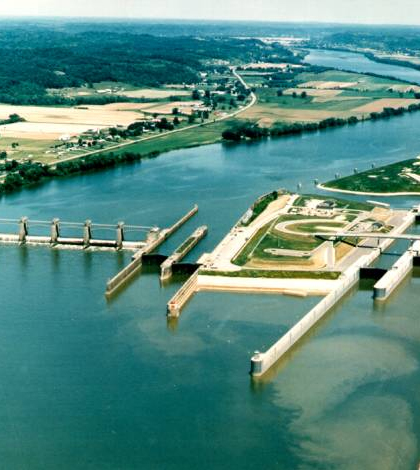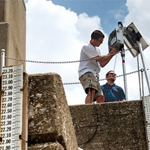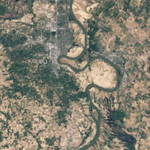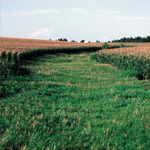Fondriest Gets ‘Friend Of ORBCRE’ Award

R.C. Byrd Locks and Dam of Ohio River. (Credit: USACE)
Leading up to the 31st annual symposium of the Ohio River Basin Consortium for Research and Education, the Environmental Monitor zeroed in on prominent projects from several scientists involved with ORBCRE.
All of the stories were published in our summer 2015 print edition, which was focused on Ohio River research as its theme.
When we made our way down to the 31st meeting, hosted jointly by Thomas More College Biology Field Station and Northern Kentucky University, we were able to share those stories with many researchers in attendance. It was great to clue them in on some of the work that their colleagues had undertaken, as well as hear about the new projects underway.
Here’s a roundup of our coverage:

ORSANCO Works To Track The Complexities Of 981-Mile Ohio River
An update on the Ohio River Valley Water Sanitation Commission’s (ORSANCO) work to monitor the health of the Ohio River using a variety of technologies and techniques.

Modeling Ohio River chlorophyll using satellite imagery
Researchers at Marshall University use satellite imagery and grab samples to develop a model of the Ohio River’s chlorophyll levels.

Oxygen Levels Tell Extent Of Ohio River’s Metabolism
Researchers at Marshall University use dissolved oxygen, temperature and solar radiation levels to model the Ohio River’s metabolism.

GIS-based tool could help reduce nutrient runoff into Mississippi, Ohio Rivers
Scientists at the Iowa DNR and Iowa Geological Survey used GIS maps to create a guide for mitigating nutrient runoff in the Upper Mississippi and Ohio River basins.

The Fondriest Environmental booth at the 31st annual ORBCRE Symposium.
Fondriest Environmental was also presented with the “Friend of ORBCRE” award for dedication and service toward achieving the goals of the Ohio River Basin Consortium for Research and Education. A thanks to ORBCRE for this honor!
Top image: R.C. Byrd Locks and Dam of Ohio River. (Credit: USACE)




0 comments